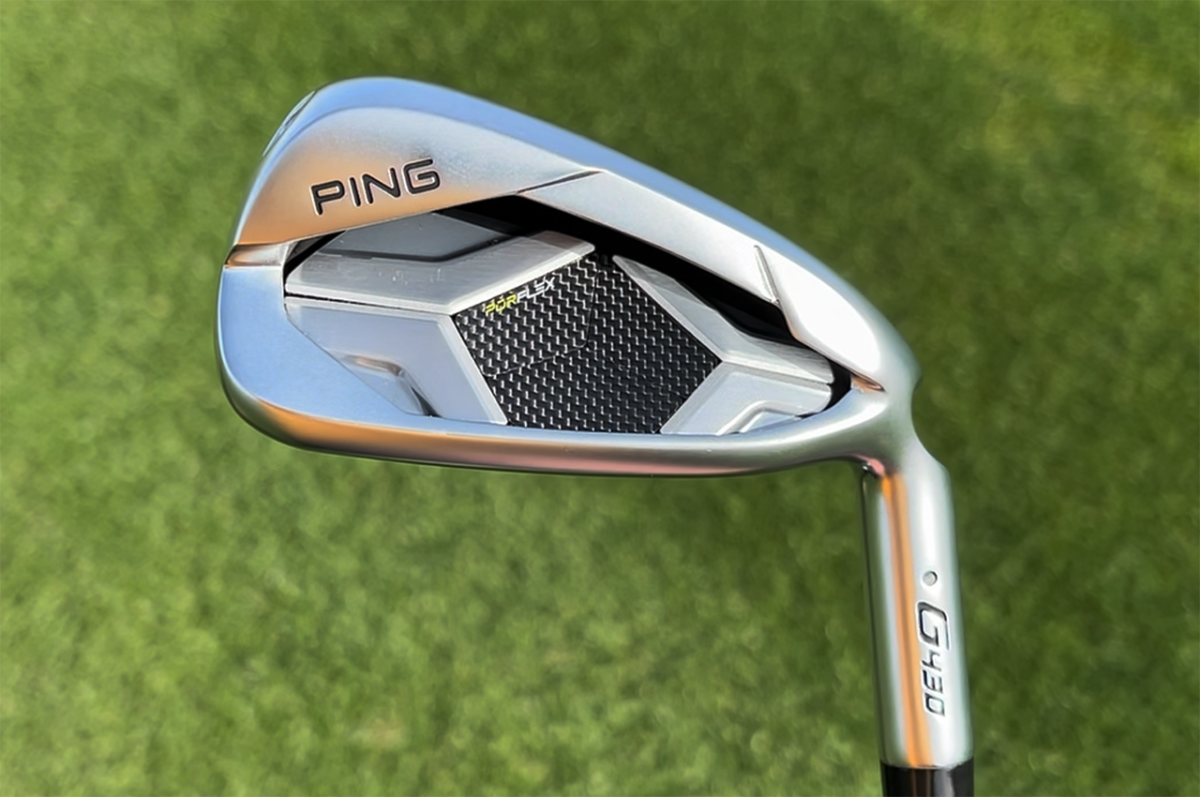Gear: Ping G430 irons
Price: $170 each with Ping AWT 2.0 steel shafts and Golf Pride Tour Velvet grips. $185 each with Alta CB Black graphite shafts.
Specs: Cast 17-4 stainless steel heads with internal tungsten weights
Available: Jan. 26
[mm-video type=video id=01gpe4y03jpmpr6jwzvx playlist_id=none player_id=01f5k5vfbhv59szck1 image=https://images2.minutemediacdn.com/image/upload/video/thumbnail/mmplus/01gpe4y03jpmpr6jwzvx/01gpe4y03jpmpr6jwzvx-11b7cc21a03588dcb32883450b1a3125.jpg]
Who It’s For: The G430 irons are game-improvement clubs for mid- and higher-handicap players who want more distance and forgiveness.
The Skinny: The successor to the G425, the G430 irons were designed with a faster face, lower center of gravity and a new vibration-absorbing back badge to deliver more distance, a higher launch and a better feel.
The Deep Dive: Making an appealing game-improvement iron is tricky business. Golfers who shoot in the mid-80s to high 90s typically need more distance and forgiveness, but they aren’t beginners. They want clubs that look good at address and feel and sound good at impact, but they also need their clubs to help overcome shortcomings in their swing. It’s a tall order that Ping has answered with the recent G425, G410 and G400. Now comes the G430, the successor to those offerings with which Ping tried to create a club that delivers on all those fronts.

The G430 has a cast 17-4 stainless steel body and face that has been given a new heat treatment. Ping said it makes the hitting area stronger, so designers could make it thinner and 3 percent lighter. The thinner face should flex more efficiently at impact to boost ball speed, and while a 3 percent weight savings may not sound like much, making the hitting area lighter means more weight can be shifted to other areas of the club where it will improve performance.
Ping also lowered the center of gravity and added a tungsten weight in the heel and a tungsten screw to the toe. That added mass makes the G430 less likely to twist on off-center hits for increased consistency.

Ping also designed a new back badge called PurFlex and attached it behind the hitting area of the G430. It is comprised of seven different pieces that deliver varying levels of stiffness. Ping’s engineers learned that dividing the badge instead of relying on a single large one encouraged more face flex while absorbing excessive vibrations to improve sound and feel.
Another subtle thing Ping did was shorten the length of the G430’s hosel, which reduced weight high in the club and helped make the G430 look more compact in the address position.
The lofts of the G430 irons are stronger than the lofts designed into the G425 by 1 to 2.5 degrees in the 4-iron (19 degrees) through 9-iron (37 degrees). The pitching wedge is 3.5 degrees stronger (41 degrees), so Ping added another wedge offering to the set and simply labeled it with its loft. Now above the pitching wedge are 45-, 50-, 54- and 58-degree clubs that golfers can buy to ensure ideal gapping between each club.

The faster face and stronger lofts help the G430 create 2 mph more ball speed than the G425. Ping said that tests show distance increases between 7 and 12 yards with the 4-iron through pitching wedge and a slightly higher ball flight.
Finally, because players who tend to shoot in the high 80s and 90s often struggle to with ground-first contact, Ping gave the G430 irons 1 degree more bounce than is found in the G425 irons. It’s a subtle adjustment, but the extra bounce should help the G430 avoid digging on fat shots and work through the impact area more efficiently.
